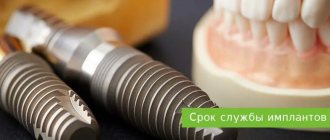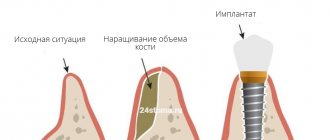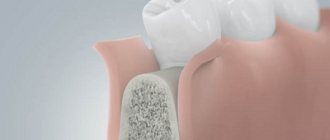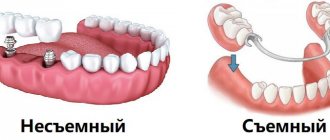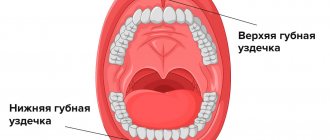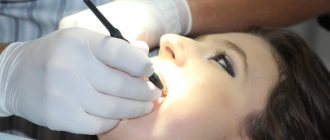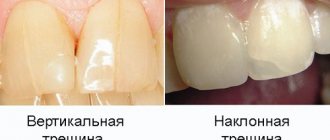The most important condition for successful dental implantation is a sufficient amount of bone tissue. If there is not enough for reliable installation of the implant, then an operation called bone grafting is used to increase the volume. If indicated, such an operation is also performed in CELT dentistry.
Many patients are afraid of this procedure - it seems risky to them. Often, having learned that bone tissue augmentation is necessary, they refuse implantation in favor of less comfortable and reliable methods of prosthetics. We will look at the features of bone grafting, make sure that grafting is not dangerous, and find out in which cases it cannot be done without it.
Consultation with an implantologist (when conducting or OPTG studies at CELT - free of charge) - 1,500 rubles.
Taking an autograft - 10,000 rubles.
Plastic surgery of complex hard tissues (membrane) - RUB 20,000.
Complex hard tissue plastic surgery (veneer) - RUB 35,000.
Complex hard tissue plastic surgery (block) - RUB 35,000.
Simple plastic surgery of hard tissues (minor regeneration) - RUB 7,500.
Complex soft tissue plastic surgery for 2-3 teeth - 15,000 rubles.
Simple soft tissue plastic surgery in the area of 1 tooth - 10,000 rubles.
Bone material BIO-OSS - RUB 11,000.
Osteomatrix bone material - RUB 5,000.
Membrane BIO-GUIDE PERIO - RUB 15,000.
Osteomatrix membrane — RUB 7,500.
At CELT you can get advice from a dental specialist.
- Cost of consultation with an implantologist (when performing CT or OPTG in CELT - free) - 1,500
- Consultation with a dental surgeon – 1,000
Make an appointment
Implantation and bone volume
Dental implantation has many advantages over classical prosthetic methods. One of the things that is not very obvious to people far from medicine is the preservation of bone volume around the implant (implant) due to the stimulating load during chewing, while with removable dentures or simply a long-term absence of a tooth, a gradual decrease in the thickness and height of the bone is observed. This is due to the fact that when installing dentures that rest on teeth, the bone tissue does not receive the necessary load. The bone plate gradually becomes thinner as it does not receive sufficient stimulation.
This is not the best consequence of removable prosthetics; over time it can cause a lot of inconvenience. Resorption of tissue is fraught with weakening of the gums and a decrease in the strength of the remaining teeth. The thinning of bone tissue can be stopped using bone grafting followed by implantation. After installation of the implant, the tissue receives a normal natural load, which means that pathological thinning does not occur. In addition, the implant looks much more aesthetically pleasing than a removable denture and looks more natural.
When is bone grafting needed?
When implanting teeth, there is often a need for bone grafting. This is an operation to augment bone tissue using synthetic material or bone material, either animal or obtained directly from the patient.
After tooth loss, the process of bone atrophy begins at the site of the missing tooth. This can be avoided by carrying out so-called socket preservation, or a set of measures aimed at preserving the anatomy of the bone and soft tissue in the area of the extracted tooth. That is, how exactly the tooth was removed is of great importance. Unfortunately, when a tooth is removed, such a complex is not always carried out. The first changes in the alveolar ridge (bone) are visible after 3-4 months. Pronounced thinning is observed a year after tooth loss and then only increases. Therefore, it is important to contact an implantologist in a timely manner. According to our statistics, few patients install an implant immediately after tooth loss. Some people take a long time to heal after removal, some have no time, some need to prepare mentally, others need to save up the necessary amount. As a result, when a patient comes to have implants installed, it often turns out that he does not have enough bone tissue - which means that a augmentation procedure is required first, and maybe only then implantation.
Sometimes bone grafting is prevented by serious contraindications. There are some cases when the bone tissue does not thin out and is preserved in full. Each case should be considered individually with the implantologist you contacted. It is important to choose a competent specialist - the doctor must objectively assess the condition of the bone tissue, the feasibility of implantation and offer the patient the most profitable and reliable procedure.
The volume and need for bone grafting can be most accurately assessed only with the use of computed tomography and 3D modeling - which is successfully used in our clinic at an expert level.
In most cases, bone grafting is still needed during implantation. Without it, tissue thinning can cause further bone atrophy, which will affect the stability of the implant.
Plastic surgery is also used if implantation is not planned - sometimes bone atrophy can lead to teeth shifting towards the lost tooth. Then dental correction of this pathological condition is required.
How much does surgical treatment cost?
The cost of surgery to restore gums starts from 15,000 rubles. For creating an ideal contour around one tooth.
In case of significant bone deficiency, additional bone grafting may be performed. The decision to use this treatment method is made by the doctor based on the results of computer diagnostics.
The specialists of Dr. Lemberg Dental Clinic are waiting for you for a consultation, where you can see all the equipment used, get answers to all your questions and undergo a comprehensive diagnosis to draw up a comprehensive treatment plan. Doctors will make every effort to make your smile perfect.
Types of bone grafting
Plastic surgery can be performed in different parts of the jaw:
- Plastic surgery of the lateral sections of the lower jaw. Correction of the lateral sections of the lower jaw is required if there is a pronounced decrease in the volume of the alveolar process and a decrease in the distance to the canal of the lower jaw.
- Frontal plastic surgery on both jaws. As for the anterior section, plastic surgery is necessary due to bone resorption. During thinning, a modified alveolar ridge, thin and sharp, is formed. And the front teeth bear an increased load when they dislocate forward, so it is important to return the normal volume of bone tissue to install implants adequate to the load. Plastic surgery in this area is complicated by the fact that the result must be not only functional, but also aesthetic. Any problems with the front teeth are conspicuous to others and can seriously damage self-esteem.
- Lateral sections of the upper jaw - this procedure has a special name, sinus lift. Sinus lifting is so called because the operation involves penetration into the bony volumes of the skull occupied by the sinuses or, as they are also called, the maxillary sinuses. It is important to understand that this is not an operation associated with penetration into the cavity of the maxillary sinus itself, but the release of bone volume for the introduction of replacement material WITHOUT perforation of the nasal mucosa. Currently, two types of surgery are used: open sinus lift and closed sinus lift. They differ in the surgical technique and the method of access to the sinuses.
Why are the mandibular “Jolie Angles” distinguished?
Pronounced angles of the jaw emphasize youth , because with age, each of us “loses” this aesthetic feature.
The main reason is the so-called bone resorption: the bones of the skull “wear down” and become thinner. After 45 years, a decrease in the severity of the angles and lines of the lower jaw can be observed.
In some people, the clarity of the contour of the lower jaw is genetically unexpressed, unlike Angelina Jolie, who is fine with this. By the way, she has an incorrect bite, thanks to which we all look up to her!
Traditionally, the “Jolie angles” procedure is part of the “Jolie profile” complex , aimed at harmonizing the face and recreating the triangle of youth:
- cheekbone correction
- chin correction
- lip correction
- correction of the line and angles of the lower jaw
But, of course, manipulation of the angles of the jaw can be carried out separately.
Materials used
The material used to make the bone plate can be natural or synthetic. They are similar in their ability to replenish bone tissue and have comparable engraftment rates. Synthetic materials are powder or shavings and are currently used by dentists in all developed countries of the world.
But better than synthetic is material of animal origin (xenograft) or your own bone material. Synthetic takes root well, but materials from animals or your own (autogenous material) have a lower risk of rejection, a lower degree of resorption, and the body accepts them better. To produce materials of animal origin, biomaterial from cows and bulls is used, which goes through several degrees of purification and sterilization. In fact, in terms of purity, this material corresponds to synthetic, but depending on the manufacturer, it can give better results than synthetics. Natural material is taken from the donor area, usually the chin or bone tissue near the wisdom teeth. The only difficulty in using your own bone material is that its collection requires additional intervention (in fact, harvesting an autograft is an operation not much different from removing a wisdom tooth and in some cases even simpler). Another type is xenotransplantation.
There is no specific standard, so the material is selected by the doctor together with the patients. The final cost of bone grafting may depend on the material chosen. The use of artificial biocompatible osteoplastic material or sampling from the patient himself is considered more justified and popular. If necessary, you can select material from extraoral areas without damaging the gum tissue.
If bone grafting is carried out correctly and in full, then subsequently the installed implant will hold securely, regardless of the complexity of installation and healing.
Laser gingivoplasty
Laser correction of gum contour has been successfully used by dentists for a long time! The main advantage of this method is painlessness and accelerated healing. During the operation, the laser immediately seals the vessels whose integrity has been compromised. Thanks to this, there is no bleeding during manipulation. After laser gingivoplasty, healing occurs within a few weeks and in the vast majority of cases it is completely painless.
Benefits of bone grafting
During implantation, bone loss occurs, which can be avoided with plastic surgery.
After surgery, the body experiences stress, and most importantly, it begins to work differently. While eating, there is no load on the jaw, so the bone tissue gradually disappears. Standard dentures do not solve the problem, but only create unnecessary stress on neighboring teeth. To solve the problem 100%, you need to install an implant. It will improve your smile, maintain your health, and also prevent the development of complications after tooth loss. Bone grafting completely eliminates atrophy of the jaw bones even in adulthood.
Disadvantages of bone grafting
The main disadvantage is that excellent results can only be achieved by a real expert.
Any errors at the diagnostic stage or during surgery can lead to serious consequences: rejection of the bone block, formation of pus, inflammation and infection. After surgery, swelling often occurs, but it goes away on its own within 3-4 days. Hematomas often appear. Swelling and hematomas occur during any procedure. Therefore, it is necessary to inform the client in advance about the possible consequences.
Recovery period:
Mentoplasty is a low-traumatic operation, but requires care in the postoperative period. During augmentation surgery, it is important to allow a pocket to form that will tightly hold the implant. Therefore, the pressure bandage must be worn for about three weeks. At this time you need to sleep on your back, limit facial movements, and do not go to the sauna. Within three days, the patient may experience pain, especially when chewing, notice hematomas and swelling, which will then go away on their own. If stitches are applied, they are usually removed within 7-10 days. If access was made through the oral mucosa, you need to follow a diet - do not eat hot, very cold, spicy, and in any case avoid solid foods.
Complications of bone grafting
There is a risk of complications in any surgical operation and bone grafting is no exception. The complexity of bone grafting greatly depends on the volume of the operation - preparation for implantation of one or more teeth will differ significantly in volume. Naturally, the risk of complications is reduced if you turn to a professional who performs such operations on a regular basis and if you strictly follow all postoperative recommendations.
The most serious complications known from bone grafting are:
- Inflammatory process in the wound.
- Suppuration, infection of the wound.
- Rejection of osteoplastic material.
These complications can be either a consequence of the doctor’s lack of competence or the result of the patient’s neglect of rehabilitation recommendations. It is important to follow all your doctor's instructions regarding the recovery period. Complications are not irreversible with proper treatment, but can lead to complete rejection of the material and the return of the original bone volume.
In addition to complications, there are natural consequences of plastic surgery - tissue swelling and slight bleeding. These symptoms appear immediately after the intervention and persist for 2-3 days. If symptoms last longer, you should consult your doctor. Sometimes hematomas appear, which can be visible on the skin of the face (especially when working with the lateral parts of the jaw and double-sided plastic surgery).
What to do after the procedure
No special rehabilitation is required after such an intervention. The result is noticeable immediately; there are usually no traces left after the injections. In the first couple of days after the session, you need to protect your face as much as possible, try not to touch it unless necessary (so as not to cause an infection). You cannot use foundation and powder. For 2 weeks after the procedure, it is not recommended to sunbathe on the beach or in the solarium, or visit the bathhouse or sauna.
After this time, you can return to your normal life and enjoy the results.
To make an appointment for correction of jaw angles in Moscow, just call us or use the form on the website. We are located in the very center of Moscow, next to the Baumanskaya metro station and 1905 Goda Street. Our specialists will select the optimal solution for your case and help you achieve the best aesthetic result.
Is it possible to perform bone augmentation at the same time as dental implantation?
New implantation technologies make it possible to perform two processes at once in one procedure, but first you need to determine the feasibility of this approach. Professionals often divide the work into several stages:
- Removal of a tooth.
- Bone grafting.
- Implantation.
But there are two pitfalls here. Firstly, not all clients are ready to go through the operation 3 times. Secondly, dividing the process into several stages is advisable only in cases of severe bone loss. To determine the appropriate method of performing the procedure, it is necessary to take into account the individual characteristics of the client and conduct competent diagnostics.
Alternatives to Bone Grafting
There are 2 technologies in dentistry that do not involve building up bone tissue for implantation:
- The All-on-4 protocol is recommended for fixed prosthetics in edentulous clients. It is possible to carry out work even with minimal bone height, since all implants are installed at different angles. The technology is performed without bone grafting in 99% of cases.
- Basal implantation is carried out using a complex technology that involves fixing implants in the basal layers of bone tissue at the maximum depth. This layer has enormous strength and rarely atrophies over time. The technology is universal and suitable for installing a bridge or local missing teeth
As a rule, both technologies are implemented in one visit to a specialist. The use of the All-on-4 protocol makes it possible to fix a horseshoe-shaped bridge consisting of 12-14 teeth on 4-6 implants.
